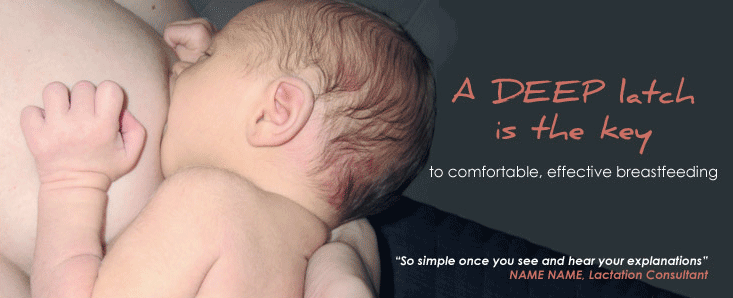
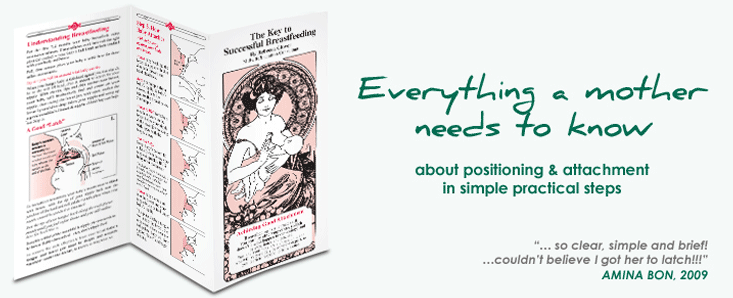
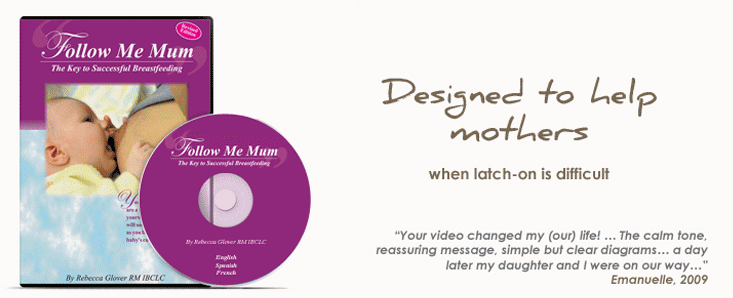
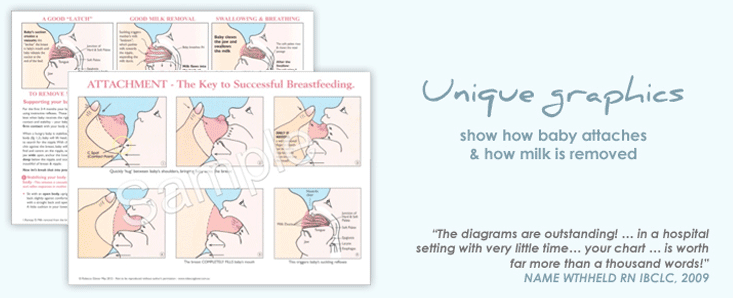
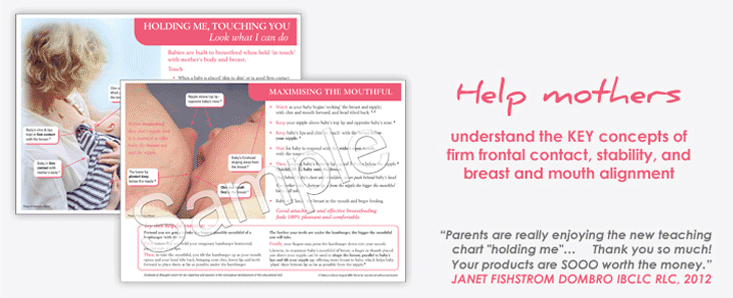
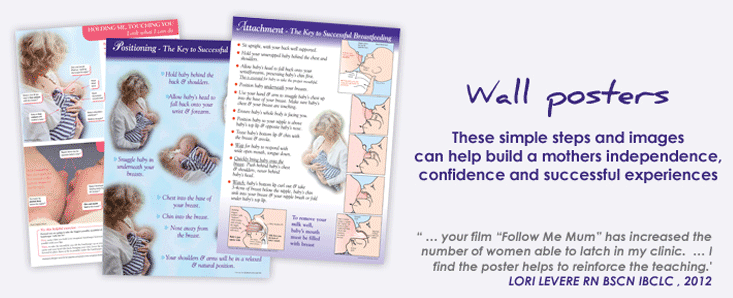
Latch Problems: Be a Credible Coach
If strategies such as extended skin to skin, or biological nurturing positions have not worked and a baby is still struggling to achieve a deep comfortable and effective latch a mother may need some expert help.
When providing expert help Pajares (2002) warns that “It is important to know the precise nature of the skills required to successfully perform a particular behavior”.
To be a good coach we need to provide clear credible information to a mother and to do that effectively we need to be clear about the key elements of the behaviour that can make the difference between success and failure.
Based on the current research and my experiences with breastfeeding mothers and babies over the past 40+ years I have listed below the key elements of the positioning and attachment behaviour that I have found effect the outcome when latching on is difficult or painful.
These behaviours apply to all holds and positions.
1. Posture is Paramount
It begins with postural stability - the foundation stone of a deep comfortable latch.
Look at the posture of both mother and baby. They must not be curled into a comma!
Be alert for anything in the mothers physical environment that contributes to a forward curled posture. (low seats, soft sagging seats, no back support, no lumbar support)
Encourage any position that; opens the mothers torso, straightens her back, opens her shoulders, lifts her breasts up from her abdomen. All of these behaviours open mothers body, creating more space for her baby's body to lie against her.
2. Open Bodies Together – No gaps
Baby’s body also needs to uncurled, to “lie” PRONE on mothers open body and breast – Closely Applied, no gaps. Like you might lie in bed, flat on your tummy, hands up near your head and shoulders, head on the pillow!
Suzanne Colson says "Mother and baby should fit together like two pieces of a jigsaw puzzel" a perfect analogy!
3.Shoulders are the Stable Table
Positional stability of a baby’s shoulder girdle is the floor from which all the reflex seeking and attaching actions are generated. If this floor is unstable baby's reflex movements will be like a ballerina trying to dance on a moving stage.
Show a mother how to stabilize baby's shoulders against her body. Use visual media, video, images of other mothers - doing it well, graphics and perhaps most effective of all a soft bodied doll and your own body to model this crucial behaviour. (see Rebecca’s Holding Me – Chart, Poster, Tear-off sheets and Positioning Poster. READ MORE... Participatory Modeling)
4. Finding by Feel
Once stable, newborn to 3-4 month old infants are built to find and centre on the nipple by smell and feel. The touch (sensory stimulus) of cheek-chin-lips against the mothers chest or breast trigger, rooting, head righting, gaping and tongue extrusion reflexes – seeking and attaching behaviours.
Show a mother how her baby responds and help her understand how to work with her baby’s seeking behaviours, patiently allowing her baby to work their way to and centre on the breast and nipple. Tip: If baby becomes frustrated and disorganized, rest a cheek against the breast, beside the nipple, and wait for the seeking behavior to begin again.
5. The "Instinctive Feeding Position" - chin and mouth reaching up, head tilted back
Once again posture is a key behaviour in the positioning and attachment process.
Help a mother to observe and understand her baby's first 'seeking' response. Show her how her stable baby lifts the chin and mouth and reaches up for the nipple, head tilted back. This distinctive and instinctive posture moves the baby's external and internal anatomy into the ideal position for controlled, strong and effective seeking and attaching behaviours. (see "Understanding Breastfeeding" in Rebecca's Pamphlet and READ MORE ... in Glover R. Wiessinger D. (2012) p117-119)
6. Nipple to Nose
When a baby is not latching deeply enough and attachment is difficult or painful, coaching a mother to use techniques that keep her nipple above baby’s top lip, centered just under baby’s nose, can help baby take a bigger mouthful of breast. This has the added advantage of keeping an already sore or damaged nipple out of baby’s reach until the moment of attachment. (See Rebecca Glovers unique Graphics in her Pamphlet, Attachment-Teaching Chart, Attachment-Poster, and the animations in her DVD Follow Me Mum.)
7. Where’s the Anchor Point?
Focus on the breast below the nipple going into baby’s mouth and establish where the achor point is for each individual mother. The lower the bottom lip and chin anchor on the breast the greater the potential for a deep comfortable attachment.
Explain to the mother; exactly where that ANCHOR point needs to be for her – that the edge of her areola is NOT necessarily the anchor point (areola size varies between mothers) – encourage her to ACT out the ‘Hamburger Analogy” with you, demonstrate and explain how each step relates to how baby needs to take the breast. (See Holding Me-Chart, Poster, Tear-off sheets)
Watch intently where a baby's bottom lip lands and if it remains ANCHORED firmly at that point on the breast.
Prevent behaviours that cause the bottom lip to slip up towards the base of the nipple.
8. The “Hug” – When-Where-Why
When baby’s lips center on the breast, just below the nipple, and the lower jaw and lip swing down to an anchor point that is at least 3-4 cms below the base of the nipple – a wide open mouth.
Where: Hug behind the baby’s shoulder blades, which has the effect of pushing baby’s chest and chin in towards mothers body and breast.
Why: As baby’s shoulders move in towards the mothers body, it causes baby’s head to tilt back more and pushes the anchored bottom lip and chin deeper into the breast. The aim is to help baby to take all the breast that is above the bottom lip into the mouth first. Tthe nipple goes in last for a deep comfortable latch. (See the unique graphics in Rebecca Pamphlet, Attachment-Teaching Chart, Attachment-Poster, and the animations in the DVD Follow Me Mum.)
9. Watch & Wait
Being a careful observer of all of the above behaviours will enable you to become an credible and effective coach for the mother and baby who are having problems with positioning and attachment.
Model the behaviours using a variety of visual media including a soft bodied doll and your own body – see Can you Help me Breastfeed?
Be patient – be prepared to wait and watch a little as mother and baby try to put into practice what you have shown them. Give positive feedback for successful actions and as needed do step in to prevent errors. Sensitively coach a mother until together you find a way for her to experience success with each of the behavioural steps.
Be confident in your knowledge of these behaviours, model to the max, keep your language clear and simple and relevant to the behavior.
I hope that like me you will continue to learn from every mother and baby you work with.
© Rebecca Glover


